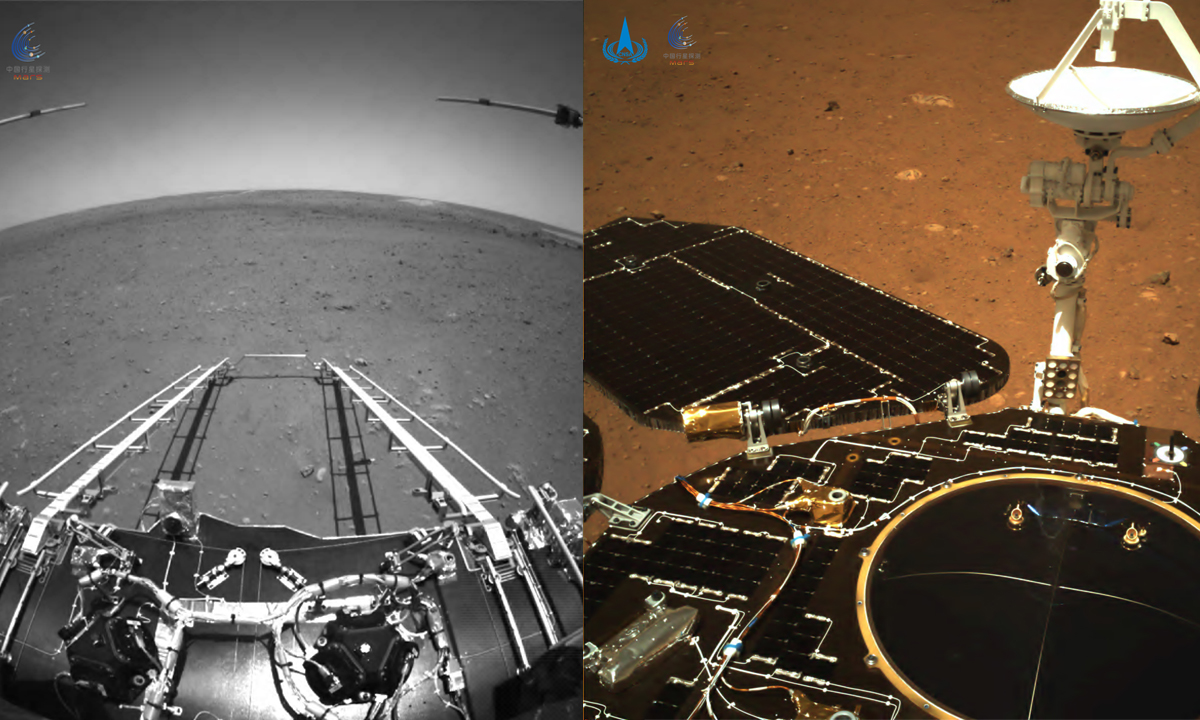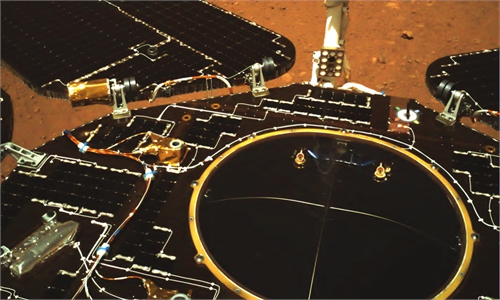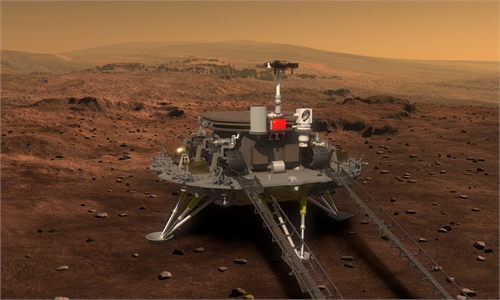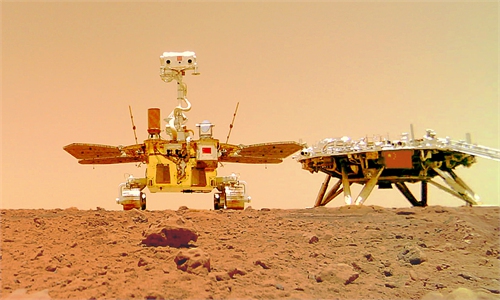SCI-TECH / AIR & SPACE
Chinese rocket manufacturer outlines manned Mars mission roadmap, timetable

China's Zhurong rover sends back images from Mars. Photos: CNSA
China's prime rocket manufacturer has unveiled a roadmap for the country's future manned Mars exploration missions, which not only includes manned landing missions but also Mars base building.
Wang Xiaojun, head of the state-owned China Academy of Launch Vehicle Technology (CALT), outlined the plans in his speech themed "The Space Transportation System of Human Mars Exploration" at the Global Space Exploration Conference (GLEX 2021) via a virtual link, the academy told the Global Times on Wednesday.
After reviewing the successful mission of the Tianwen-1 probe mission, the country's first interplanetary exploration that achieved a successful orbiting, landing and roving the Red Planet all in one go, Wang introduced the three-step plan for future Mars expedition.
At the primary stage, or the technology preparation phase, androids will be launched whose mission include a Mars sample return mission and the exploration of a Mars base site.
Next will be a manned Mars mission, and the building of a Mars base will be carried out.
The third stage will be attempting shuttling large scale Earth-Mars cargo fleet and large scale development of the Red Planet.
The timetable for such mission launches will be 2033, 2035, 2037, 2041 and 2043, among others, the academy said.
Nuclear propellant is considered as a prime option for the manned Mars exploration missions, per the academy chief.
Also, a "Sky Ladder" system, according to Wang, is under study, as a starting point for such a space voyage, in a bid to reduce the scale of Mars probe and transport missions.
The academy did not elaborate on the Sky Ladder system.
Technologies like the Sky Ladder delivery system have been mentioned before, as some scientists believe it would transport humans and goods to the moon for just four percent of the current cost.
Xinhua Global Service has illustrated the process in a computer graphic footage. It shows a manned or cargo space capsule travelling along a carbon nanotube "ladder" to reach a space station before it is relaunched from the space station.
Then the capsule would reach a second space station and travel along the second rung of the "ladder" to the moon.
China disclosed earlier in June that it is making plans for future development of its space program, including exploring asteroids and the Jovian system, collecting samples from Mars and exploring the polar region of the moon, according to the China National Space Administration.
China plans to launch a Mars sample-return mission and a Jovian system exploration mission sometime about 2030, said the administration officials.





